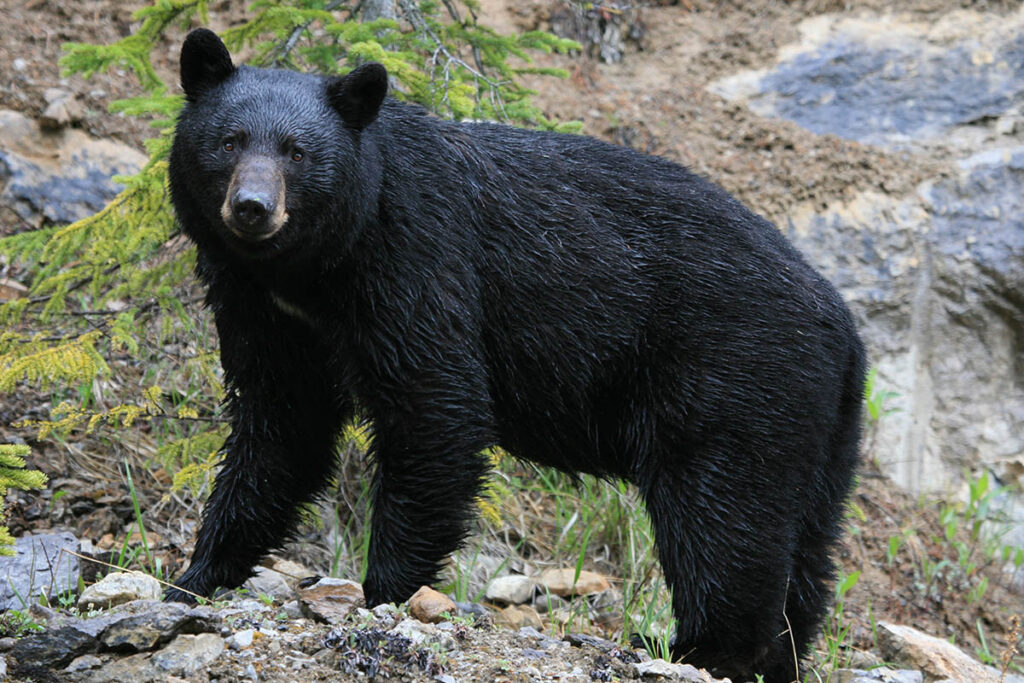Kootenay National Park Wildlife Viewing
For most visitors, Kootenay National Park wildlife viewing is concentrated along Highway 93, with dawn and dusk the best times to see larger mammals. With over 5,000 vehicles daily travelling the route during summer, most wildlife tends to move away from the highway during the middle of the day.
The animals you’re most likely to see from the highway are white-tailed deer, which are generally very flighty when feeding along the side of the highway. Also present in the Kootenay and Vermilion River Valleys are mule deer, moose, black bears, and elk. Mountain goats generally stay at high elevations, feeding in alpine meadows throughout summer, but we have seen them down beside the highway near the Vermilion River.
Exact grizzly bears numbers within Kootenay National Park are unknown, but there are probably only 30 or 40, most of which range throughout the remote backcountry. Occasionally they are sighted in spring high on avalanche slopes near Kindersley Pass and beside the highway at Vermilion Pass.
Bighorn sheep can be seen at mineral licks along Highway 93, but are most common in the vicinity of the mineral pools at Radium Hot Springs. They spend time on both sides of Sinclair Canyon, including in the village of Radium Hot Springs itself.
Although no wolf packs call Kootenay National Park home, lone wolves are occasionally spotted along Highway 93 between Kootenay and Vermilion Crossings.
For descriptions of all wildlife species present in Kootenay National Park, visit our Kootenay National Park Nature Guide.
Kootenay Wildlife Photography Book
Even if you’re not interested in photography, Canadian Rockies Wildlife Photography an eBook by renowned wildlife photographer Wayne Lynch, is a great resource for searching out local wildlife. It includes all the very best places to view wildlife in Kootenay National Park.
Wildlife Safety in Kootenay National Park
An abundance of wildlife is one of the biggest draws of Kananaskis Country. To help preserve this precious resource, obey fishing and hunting regulations and use common sense.
DO NOT FEED THE ANIMALS. Many animals may seem tame, but feeding them endangers yourself, the animal, and other visitors, as animals become aggressive when looking for handouts (even the smallest critters, such as squirrels).
STORE FOOD SAFELY. When camping, keep food in your vehicle or out of reach of animals. Just leaving it in a cooler isn’t good enough.
KEEP YOUR DISTANCE. Although it’s tempting to get close to wildlife for a better look or a photograph, it disturbs the animal and, in many cases, can be dangerous.
DRIVE CAREFULLY. The most common cause of premature death for larger mammals is being hit by vehicles, especially along unfenced sections of Highway 93.

Black bears are commonly seen along the Hwy. 93 corridor.
